Anya M. Wassenberg's Blog: Art & Culture Maven, page 128
June 28, 2014
Afrofest July 5 & 6 2014 in Toronto
From a media release:
Afrofest
July 5 & 6, 2014
Woodbine Park - Toronto
This is what you have been waiting for. This is the list of all artist who are going to be performing during this year's Afrofest at Woodbine Park on July 5 and 6.
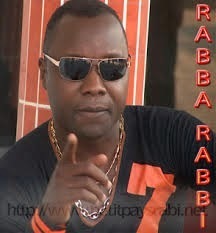 Petit Pays – Cameroon
Petit Pays – Cameroon
Petit-Pays born Adolphe Claude Moundi in Douala, Cameroon in 1967 is a Cameroonian musician. He had sold over 50,000 cassettes by 1966. He is also known as OMEGA, Rabba Rabbi, Turbo and famously Avocat defenseur des femmes (advocate for women). He is one of the most celebrated Cameroonian musicians of the late 1980s and 1990s. His music has evolved over the years adapting to contemporary African genres. He mixes native Cameroonian makossa with soukous, zouk, and salsa, leading to the portmanteau label of makozouk for some of his music. He launched his first album Haoussa in 1987, after working with makossa producers. In Haoussa, he says his father is Haoussa and mother is Douala. His band, known as Petit Pays et Les Sans Visa, with several band members moving on to start their own solo careers over the 1990s and 2000s.
He is the self crowned king of Makossa. In one of his songs, "Le Jour de ma Mort" (The Day I Die) from the album Class FM and other songs, he compares himself to Fela Kuti of Nigeria, Alpha Blondy of Côte d'Ivoire, Salif Keita of Mali and Youssou N'dour of Senegal. He always gives credit to legends like Francis Bebey, Eboa Lotin and Manu Dibango
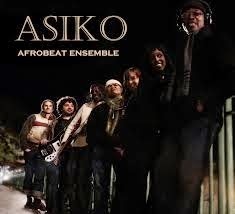 Asiko Afrobeat Ensemble (Nigeria)
Asiko Afrobeat Ensemble (Nigeria)
From the countryside of Ogidi Nigeria via New York City, Foly Kolade's Asiko Afrobeat Ensemble brings new and energized Afrobeat to the Toronto live dance music scene.
Asiko (ä•se•ko´) in Yoruba means time, an appointed moment, connoting fate, e.g. "Your time has come." Asiko group was formed in 2003 by the multi-talented singer, designer and percussionist Foly Kolade. Originally from Ogidi, Nigeria, Asiko Afrobeat Ensemble is the musical expression of a diverse group of musicians and influences. Known for its high-voltage blend of Rock, Funk, Jazz and West African rhythms, Asiko's powerful lyrics speak truth to power in the spirit of the late Fela Kuti. "Uniquely blends pumping polyrhythms that inspire manic dancing and lyrics that make you think."
Ruth Mathiang (Sudan)
Ruth Mathiang Ruth Mathiang has quickly become one of the rising stars of African music in Toronto. She comes from a musical family, where both her parents were musicians in their youth. She started her musical career in Kenya performing at social functions and local clubs. Mathiang honed her singing and composing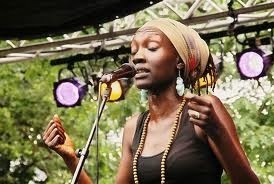 skills by performing with local musicians and adopting various styles from traditional music, gospel, Afropop and hip-hop.
skills by performing with local musicians and adopting various styles from traditional music, gospel, Afropop and hip-hop.
She recorded her first album “My Cry Peace” in Prince Edward Island, depicting her difficult life growing up in war-ravaged Southern Sudan. The CD is also a celebration of her faith and resilience as it has a gospel sound. Her second release “Butterfly” is a more refined recording, which draws from influences such as hip-hop, reggae, afrobeat and gospel. Since coming to Toronto she has established herself as one of the best female vocalist, has performed at several festivals such as Harbourfront Centre’s Hot & Spicy Festival, Afrofest, Bana y’Afrique, as well as numerous venues in the city. Mathiang also donates her time performing for non-profit agencies that especially work in Africa in sectors such as human rights, women and children issues, primary health care and community development.
Madagascar Slim (Madagascar)
Randriamananjara Radofa Besata Jean Longin (born October 31, 1956 in Antananarivo, Madagascar) is a Canadian-Malagasy folk and blues guitarist, who records and performs under the stage name Madagascar Slim. He is a member of the folk music band Tri-Continental and the world music group African Guitar Summit, as well as a solo artist and a regular collaborator with blues singer Ndidi.He moved to Canada in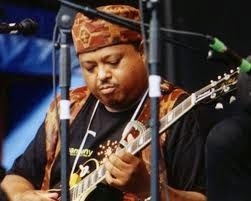 1979 to study English and accounting at Seneca College, pursuing music with the folk group La Ridaine while studying. He has cited Jimi Hendrix and B. B. King as the two primary influences on his choice to become a guitarist.
1979 to study English and accounting at Seneca College, pursuing music with the folk group La Ridaine while studying. He has cited Jimi Hendrix and B. B. King as the two primary influences on his choice to become a guitarist.
He is a three time Juno Award winner, having won World Music Album of the Year in 2000 for his solo album Omnisource and in 2005 with African Guitar Summit.
Resolutionaries Marimba Band (Zimbabwe)
The Resolutionaries Marimba band is a hot new blend of hybrid Zimbabwean music that has set dance floors ablaze and is hailed for bringing people together. Marimba is a traditional Zimbabwean instrument that combines sweet melodies with African rhythms. The Resolutionaries Marimba Music is a mix of age-old African tunes, Modern innovations and TransAtlantic "livasporic" inspiration.
The band leader, Chaka Chikodzi is a Zimbabwean-Canadian sculptor, musician, and community arts organizer. The Resolutionaries project is a product of Chaka's local arts' organization, Africville Dandaro Centre, where he runs art and music workshops for youth.
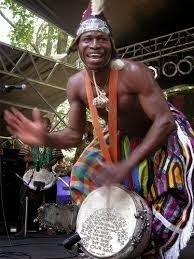 Amara Kante (Guinea)
Amara Kante (Guinea)
Professional percussionist playing traditional rhythms and instruments from Guinea, Mali, Ivory Coast, Burkina Faso and Senegal: Djembe, dununs, bara, talking drum and krin.” Of Malinké origin, Amara Kante started playing percussions at the age of seven. His talent was exceptional especially for one so young, that he was invited to perform with the KOTEBA group and the Ballets Africains de Guinée, touring throughout Africa, the United States and Europe. His extensive professional experience has attracted famous international artists such as Mory Kante and Peter Gabriel.
In 1998, he made one of his dreams come true when he set up the KAWAFOLI school of Manding percussions in Marseille, France where he taught the djembe, dunun and krin.
Beyond Sound (Multinational – Diaspora)
Beyond Sound Empijah a new generation of drummers is a collective of young artists who have grown up in various Toronto based dance and drum organizations; Ballet Creole, COBA, and Ngoma Drum and Dance Ensemble. These groups share a common goal to learn, maintain, present and share African and Caribbean Cultures. Beyond Sound Empijah brings a unique mixture of the past to the present and is dedicated to educate youth through drum and dance. This collaboration of drummers studied this art form and trained in the rhythms of drums providing them with the solid foundation that is needed when instilling a passion for musicality and performance.
Our Motto is Youth Who Engage Youth!
THE BEST OF AFRICAN DRUMMING & YOUR FESTIVAL (Burundi)
Urimosho Umurisho rhythm or Burundi Drumming is a traditional African music and dance ensemble. The Umurisho drumming show from Burundi is a highly respected African art form, with intoxicating rhythms and intricate stick- handling techniques. The group has won several awards and has performed at numerous major events and festivals in North America and Europe.
 X-Maleya (Cameroon)
X-Maleya (Cameroon)
The musical universe of the group is as diverse as the backgrounds of its members. Cameroonian Roger and Augustus, Métis American father and mother Franco-Cameroonian for Haïs. It is therefore logical that the Bassa, French and English can be found in the album. Everyone has their common key. He met a few years ago on the banks of the school, the two "blacks" are involved in the song. Roger Bassa language and Augustus in French. As for the "white" group, or Haïssama Hated to his friends, he takes the cap songwriter. Latest addition to the group, Hated never leaves his guitar. Fans will discover the album during his promotion for concerts and performances organized this year. The members of X-Maleya group heard enough this refrain during the release of their first album. For their new jewelry, young artists prefer that their audience is fixed on the quality of their music, not their youth and lack of experience it brings. Roger, Auguste and Haïssama offer an eponymous album, X-Maleya with "many fewer errors than in the first," says Roger, to reassure skeptics possible. Innovations appear as artists, in terms of technology, even if they do not drain flowers speaking of maturity, as they admit, "many things are yet to perfect." Young musicians want to get rid of this label singers hip-hop, and highlight their professional side. However, they do not stray too specific to their age rhythms. In this album, fans will find hip-hop, but also an ancient rhythm called "Makoma" updated for the occasion, in order to reconcile the youth and experience. X-Maleya reassuring. They tried to do better than the first album. "Each of us brought sensitivity and tried to do something good," said Augustus.
 Samba Mapangala (Congo/Kenya)
Samba Mapangala (Congo/Kenya)
Samba Mapangala was born in Matadi, in the region known as Bas-Congo. In the early 1970s he moved to Kinshasha for secondary education. His vocal talents were recognized early and he worked in various Kinshasa bands like Bariza, Super Tukina, Super Bella Bella, and Saka Saka. Samba travelled east with other musicians in 1975. In Kampala, Uganda in 1976, they made their mark as Les Kinois (The Kinshasans). With Samba as lead singer, Les Kinois relocated to Nairobi, Kenya in 1977 and took the music scene by storm. Samba formed his own band, the legendary Orchestra Virunga, in 1981. Virunga, named after a volcanic mountain range in central Africa, proved to be one of East Africa's most popular groups, Their music is an innovative mix of the best rumba and soukous from Congo, with the earthier Kenyan style. Samba composes and sings in both Lingala and Kiswahili. His astounding voice has been described as melting in the ears. Virunga as a whole also get high praise; "The telepathy that runs between the bass, drums and rhythmic guitar players of this outfit is jaw-dropping…" (Ian Anderson, Folk Roots).
Virunga's first recording was the LPIt's Disco Time with Samba Mapangala (1982). Samba Mapangala and Virunga went to UK in April 1991 and played 23 concerts, not surprisingly causing a terrific buzz. After celebrated journeys through Africa, Europe and North America,Virunga last toured in 1997. Samba thensettled with his family in Washington D.C. Samba Mapangala made a triumphant return with his CD Ujumbe(The Message).
Samba's albums to date includeVirunga Volcano (1990), Evasion (1983),Feet on Fire (1991), Karibu Kenya(1995) recorded in Paris with Les Quatres Etoiles and other veteran musicians, Vunja Mifupa (1997) released on cassette in East Africa as Confusion and in 2001,Ujumbe. Virunga Roots Volume 1, featuring songs from the Orchestra Virunga archive, was released in 2005.In 2000 Samba's presence at the Kenyan Jamhuri celebrations in London was one of the major highlights. His music is timeless, sounding as fresh after the 100th hearing it as it did the 1st. The lyrics, often containing advice or social commentary, are charming and interesting, the melodies delightful, energetic and exuberant.
Samba's latest album is Song and Dance (2006) on virungarecords featuring Bopoland other great members of Orchestra Virunga. They promoted the album and other great hits during a very energetic UK tour in March 2006. Samba was in Kenya for a major event, Ecofest, on 4th June 2006 alongside other well-known Kenyan musicians.

Afrofest
July 5 & 6, 2014
Woodbine Park - Toronto
This is what you have been waiting for. This is the list of all artist who are going to be performing during this year's Afrofest at Woodbine Park on July 5 and 6.
 Petit Pays – Cameroon
Petit Pays – CameroonPetit-Pays born Adolphe Claude Moundi in Douala, Cameroon in 1967 is a Cameroonian musician. He had sold over 50,000 cassettes by 1966. He is also known as OMEGA, Rabba Rabbi, Turbo and famously Avocat defenseur des femmes (advocate for women). He is one of the most celebrated Cameroonian musicians of the late 1980s and 1990s. His music has evolved over the years adapting to contemporary African genres. He mixes native Cameroonian makossa with soukous, zouk, and salsa, leading to the portmanteau label of makozouk for some of his music. He launched his first album Haoussa in 1987, after working with makossa producers. In Haoussa, he says his father is Haoussa and mother is Douala. His band, known as Petit Pays et Les Sans Visa, with several band members moving on to start their own solo careers over the 1990s and 2000s.
He is the self crowned king of Makossa. In one of his songs, "Le Jour de ma Mort" (The Day I Die) from the album Class FM and other songs, he compares himself to Fela Kuti of Nigeria, Alpha Blondy of Côte d'Ivoire, Salif Keita of Mali and Youssou N'dour of Senegal. He always gives credit to legends like Francis Bebey, Eboa Lotin and Manu Dibango
 Asiko Afrobeat Ensemble (Nigeria)
Asiko Afrobeat Ensemble (Nigeria)From the countryside of Ogidi Nigeria via New York City, Foly Kolade's Asiko Afrobeat Ensemble brings new and energized Afrobeat to the Toronto live dance music scene.
Asiko (ä•se•ko´) in Yoruba means time, an appointed moment, connoting fate, e.g. "Your time has come." Asiko group was formed in 2003 by the multi-talented singer, designer and percussionist Foly Kolade. Originally from Ogidi, Nigeria, Asiko Afrobeat Ensemble is the musical expression of a diverse group of musicians and influences. Known for its high-voltage blend of Rock, Funk, Jazz and West African rhythms, Asiko's powerful lyrics speak truth to power in the spirit of the late Fela Kuti. "Uniquely blends pumping polyrhythms that inspire manic dancing and lyrics that make you think."
Ruth Mathiang (Sudan)
Ruth Mathiang Ruth Mathiang has quickly become one of the rising stars of African music in Toronto. She comes from a musical family, where both her parents were musicians in their youth. She started her musical career in Kenya performing at social functions and local clubs. Mathiang honed her singing and composing
 skills by performing with local musicians and adopting various styles from traditional music, gospel, Afropop and hip-hop.
skills by performing with local musicians and adopting various styles from traditional music, gospel, Afropop and hip-hop.She recorded her first album “My Cry Peace” in Prince Edward Island, depicting her difficult life growing up in war-ravaged Southern Sudan. The CD is also a celebration of her faith and resilience as it has a gospel sound. Her second release “Butterfly” is a more refined recording, which draws from influences such as hip-hop, reggae, afrobeat and gospel. Since coming to Toronto she has established herself as one of the best female vocalist, has performed at several festivals such as Harbourfront Centre’s Hot & Spicy Festival, Afrofest, Bana y’Afrique, as well as numerous venues in the city. Mathiang also donates her time performing for non-profit agencies that especially work in Africa in sectors such as human rights, women and children issues, primary health care and community development.
Madagascar Slim (Madagascar)
Randriamananjara Radofa Besata Jean Longin (born October 31, 1956 in Antananarivo, Madagascar) is a Canadian-Malagasy folk and blues guitarist, who records and performs under the stage name Madagascar Slim. He is a member of the folk music band Tri-Continental and the world music group African Guitar Summit, as well as a solo artist and a regular collaborator with blues singer Ndidi.He moved to Canada in
 1979 to study English and accounting at Seneca College, pursuing music with the folk group La Ridaine while studying. He has cited Jimi Hendrix and B. B. King as the two primary influences on his choice to become a guitarist.
1979 to study English and accounting at Seneca College, pursuing music with the folk group La Ridaine while studying. He has cited Jimi Hendrix and B. B. King as the two primary influences on his choice to become a guitarist.He is a three time Juno Award winner, having won World Music Album of the Year in 2000 for his solo album Omnisource and in 2005 with African Guitar Summit.
Resolutionaries Marimba Band (Zimbabwe)
The Resolutionaries Marimba band is a hot new blend of hybrid Zimbabwean music that has set dance floors ablaze and is hailed for bringing people together. Marimba is a traditional Zimbabwean instrument that combines sweet melodies with African rhythms. The Resolutionaries Marimba Music is a mix of age-old African tunes, Modern innovations and TransAtlantic "livasporic" inspiration.
The band leader, Chaka Chikodzi is a Zimbabwean-Canadian sculptor, musician, and community arts organizer. The Resolutionaries project is a product of Chaka's local arts' organization, Africville Dandaro Centre, where he runs art and music workshops for youth.
 Amara Kante (Guinea)
Amara Kante (Guinea)Professional percussionist playing traditional rhythms and instruments from Guinea, Mali, Ivory Coast, Burkina Faso and Senegal: Djembe, dununs, bara, talking drum and krin.” Of Malinké origin, Amara Kante started playing percussions at the age of seven. His talent was exceptional especially for one so young, that he was invited to perform with the KOTEBA group and the Ballets Africains de Guinée, touring throughout Africa, the United States and Europe. His extensive professional experience has attracted famous international artists such as Mory Kante and Peter Gabriel.
In 1998, he made one of his dreams come true when he set up the KAWAFOLI school of Manding percussions in Marseille, France where he taught the djembe, dunun and krin.
Beyond Sound (Multinational – Diaspora)
Beyond Sound Empijah a new generation of drummers is a collective of young artists who have grown up in various Toronto based dance and drum organizations; Ballet Creole, COBA, and Ngoma Drum and Dance Ensemble. These groups share a common goal to learn, maintain, present and share African and Caribbean Cultures. Beyond Sound Empijah brings a unique mixture of the past to the present and is dedicated to educate youth through drum and dance. This collaboration of drummers studied this art form and trained in the rhythms of drums providing them with the solid foundation that is needed when instilling a passion for musicality and performance.
Our Motto is Youth Who Engage Youth!
THE BEST OF AFRICAN DRUMMING & YOUR FESTIVAL (Burundi)
Urimosho Umurisho rhythm or Burundi Drumming is a traditional African music and dance ensemble. The Umurisho drumming show from Burundi is a highly respected African art form, with intoxicating rhythms and intricate stick- handling techniques. The group has won several awards and has performed at numerous major events and festivals in North America and Europe.
 X-Maleya (Cameroon)
X-Maleya (Cameroon)The musical universe of the group is as diverse as the backgrounds of its members. Cameroonian Roger and Augustus, Métis American father and mother Franco-Cameroonian for Haïs. It is therefore logical that the Bassa, French and English can be found in the album. Everyone has their common key. He met a few years ago on the banks of the school, the two "blacks" are involved in the song. Roger Bassa language and Augustus in French. As for the "white" group, or Haïssama Hated to his friends, he takes the cap songwriter. Latest addition to the group, Hated never leaves his guitar. Fans will discover the album during his promotion for concerts and performances organized this year. The members of X-Maleya group heard enough this refrain during the release of their first album. For their new jewelry, young artists prefer that their audience is fixed on the quality of their music, not their youth and lack of experience it brings. Roger, Auguste and Haïssama offer an eponymous album, X-Maleya with "many fewer errors than in the first," says Roger, to reassure skeptics possible. Innovations appear as artists, in terms of technology, even if they do not drain flowers speaking of maturity, as they admit, "many things are yet to perfect." Young musicians want to get rid of this label singers hip-hop, and highlight their professional side. However, they do not stray too specific to their age rhythms. In this album, fans will find hip-hop, but also an ancient rhythm called "Makoma" updated for the occasion, in order to reconcile the youth and experience. X-Maleya reassuring. They tried to do better than the first album. "Each of us brought sensitivity and tried to do something good," said Augustus.
 Samba Mapangala (Congo/Kenya)
Samba Mapangala (Congo/Kenya)Samba Mapangala was born in Matadi, in the region known as Bas-Congo. In the early 1970s he moved to Kinshasha for secondary education. His vocal talents were recognized early and he worked in various Kinshasa bands like Bariza, Super Tukina, Super Bella Bella, and Saka Saka. Samba travelled east with other musicians in 1975. In Kampala, Uganda in 1976, they made their mark as Les Kinois (The Kinshasans). With Samba as lead singer, Les Kinois relocated to Nairobi, Kenya in 1977 and took the music scene by storm. Samba formed his own band, the legendary Orchestra Virunga, in 1981. Virunga, named after a volcanic mountain range in central Africa, proved to be one of East Africa's most popular groups, Their music is an innovative mix of the best rumba and soukous from Congo, with the earthier Kenyan style. Samba composes and sings in both Lingala and Kiswahili. His astounding voice has been described as melting in the ears. Virunga as a whole also get high praise; "The telepathy that runs between the bass, drums and rhythmic guitar players of this outfit is jaw-dropping…" (Ian Anderson, Folk Roots).
Virunga's first recording was the LPIt's Disco Time with Samba Mapangala (1982). Samba Mapangala and Virunga went to UK in April 1991 and played 23 concerts, not surprisingly causing a terrific buzz. After celebrated journeys through Africa, Europe and North America,Virunga last toured in 1997. Samba thensettled with his family in Washington D.C. Samba Mapangala made a triumphant return with his CD Ujumbe(The Message).
Samba's albums to date includeVirunga Volcano (1990), Evasion (1983),Feet on Fire (1991), Karibu Kenya(1995) recorded in Paris with Les Quatres Etoiles and other veteran musicians, Vunja Mifupa (1997) released on cassette in East Africa as Confusion and in 2001,Ujumbe. Virunga Roots Volume 1, featuring songs from the Orchestra Virunga archive, was released in 2005.In 2000 Samba's presence at the Kenyan Jamhuri celebrations in London was one of the major highlights. His music is timeless, sounding as fresh after the 100th hearing it as it did the 1st. The lyrics, often containing advice or social commentary, are charming and interesting, the melodies delightful, energetic and exuberant.
Samba's latest album is Song and Dance (2006) on virungarecords featuring Bopoland other great members of Orchestra Virunga. They promoted the album and other great hits during a very energetic UK tour in March 2006. Samba was in Kenya for a major event, Ecofest, on 4th June 2006 alongside other well-known Kenyan musicians.

Published on June 28, 2014 19:05
Jazz CD Release: JC Sanford's Views From the Inside (May 20, 2014) and the Jazz Orchestra Renaissance
From a media release:
JC Sanford's Views From the Inside
A landmark recording of the new jazz orchestra renaissance, marks the emergence of a brilliant bandleader and composer
• Buy the CD
One of the most exciting aspects of the current jazz scene is the resurgence of the jazz orchestra -- ensembles that make use of expanded size in order to explore bold instrumental sonorities, unexpected musical colors and arresting sonic textures while joyously mixing and matching musical genres. Critical buzz is all well and good in calling attention to these new big bands, but the solid proof of a vital musical renaissance must come in the form of compelling recorded works. Enter JC Sanford's Views >From the Inside (to be released May 20th on Whirlwind Recordings), an album bursting with ambition and invention that confirms that the promise of the new has actually come to fruition.
is all well and good in calling attention to these new big bands, but the solid proof of a vital musical renaissance must come in the form of compelling recorded works. Enter JC Sanford's Views >From the Inside (to be released May 20th on Whirlwind Recordings), an album bursting with ambition and invention that confirms that the promise of the new has actually come to fruition.
Composer, arranger, conductor and trombonist, Sanford employs the resources of fifteen outstanding players (including such celebrated contemporary stylists as trumpeter Taylor Haskins, vibraphonist Tom Beckham and percussionist Satoshi Takeishi) in an ensemble that draws on such unconventional jazz band instrumentation as French horn, accordion, tuba, English horn, oboe, bassoon, violin and cello. Utilizing the diversity of his orchestra, Sanford is able to create sparkling music that references the jazz tradition while also ingeniously incorporating classical, pop and world music sources. His mode of operation could be called selective expansion. "In order to get a wider variety of sound, I needed both more and less in the orchestra," Sanford says. "I may avoid having full horn sections as in a traditional big band, but I use musicians like Ben Kono, Chris Bacas, Dan Willis and Kenny Berger who play multiple instruments, thus giving the band a wide variety of colors."
Calling on creative capital gained from his studies with the legendary arrangers Bob Brookmeyer and Jim McNeely, Sanford makes pointed use of traditional swing conventions, yet just as frequently turns them on their head, tweaking these same conventions by employing daring compositional gambits that endow each performance with freshness and vision. "I'm always trying to turn that corner that isn't expected," Sanford says, "I was trained in the conventions of swing and big band arranging and I love that idiom, but I don't want to stay in that zone. I'm aiming to avoid the predictable, to find different colors and textures."
Yet for all its inventiveness, Views From the Inside is also an album stocked with notable melody and inviting performances. Sanford, inspired by such diverse influences as Richard Strauss, Charles Ives, Stevie Wonder and Billy Joel, makes certain that a sure sense of song and expressive drama is never lost amongst the intriguing tonal colors and surprising harmonic and rhythmic structures. "Views From the Inside," "Robins In Snow" (written as part of a new score for the 1925 silent film, Ben-Hur, and featuring the bandleader on trombone) "Brownieland" (spotlighting the accordionist Jacob Garchick), "Sunset Park, Sunset Park" and "Sky. Good. " are each marked by lyricism, shifting moods and a touch of mystery, while "Your Word Alone", "An Attempt At Serenity," "Verrazano Bikeride" and "2nd & 7th" brim with exceptionally cohesive ensemble work and forcefully expressive improvisations, while consistently maintaining strong melodic interest.
 Five of the album's twelve tracks are "Brooklyn Vignettes," originally composed as a suite for the American Music Center, pieces that reflect the varied character of the New York borough in which Sanford composed the album and where he currently makes his home. Three compact pieces feature duets between Taylor Haskins and the innovative percussionist Satoshi Takeishi, whom Sanford credits with much of the album's distinctive flavor. "When I give improvisers space, it's their space," Sanford says, "But everyone has to ask the same questions: 'Why am I doing what I'm doing? Does the music demand my contribution?' In the end, you have to allow the music to tell you where to go."
Five of the album's twelve tracks are "Brooklyn Vignettes," originally composed as a suite for the American Music Center, pieces that reflect the varied character of the New York borough in which Sanford composed the album and where he currently makes his home. Three compact pieces feature duets between Taylor Haskins and the innovative percussionist Satoshi Takeishi, whom Sanford credits with much of the album's distinctive flavor. "When I give improvisers space, it's their space," Sanford says, "But everyone has to ask the same questions: 'Why am I doing what I'm doing? Does the music demand my contribution?' In the end, you have to allow the music to tell you where to go."
Sanford studied at the University of Northern Iowa and the New England Conservatory where he earned a D.M.A. in Jazz Studies. After relocating to New York, he became involved with the BMI Jazz Composers Workshop under the direction of Manny Albam and Jim McNeely. Currently, in addition to leading his own orchestra, Sanford conducts the twice-Grammy-nominated John Hollenbeck Large Ensemble, the Alice Coltrane Orchestra featuring Ravi Coltrane and Jack DeJohnette, the Joel Harrison 19, and the Alan Ferber Nonet With Strings.
Sanford also curates the influential Size Matters series at the Tea Lounge in Brooklyn, which has presented close to 60 big bands over the past four years. Among the jazz and classical artists who have performed Sanford's compositions and arrangements are John Abercrombie, Dave Liebman, Lew Soloff, Andrew Russo and the Swedish Wind Ensemble. Sanford collaborated with composer David Schumacher in the Schumacher/Sanford Sound Assembly jazz orchestra, and is also a founding member (with Darcy James Argue and Joseph Phillips) of the composer's federation, Pulse.

JC Sanford's Views From the Inside
A landmark recording of the new jazz orchestra renaissance, marks the emergence of a brilliant bandleader and composer
• Buy the CD
One of the most exciting aspects of the current jazz scene is the resurgence of the jazz orchestra -- ensembles that make use of expanded size in order to explore bold instrumental sonorities, unexpected musical colors and arresting sonic textures while joyously mixing and matching musical genres. Critical buzz
 is all well and good in calling attention to these new big bands, but the solid proof of a vital musical renaissance must come in the form of compelling recorded works. Enter JC Sanford's Views >From the Inside (to be released May 20th on Whirlwind Recordings), an album bursting with ambition and invention that confirms that the promise of the new has actually come to fruition.
is all well and good in calling attention to these new big bands, but the solid proof of a vital musical renaissance must come in the form of compelling recorded works. Enter JC Sanford's Views >From the Inside (to be released May 20th on Whirlwind Recordings), an album bursting with ambition and invention that confirms that the promise of the new has actually come to fruition.Composer, arranger, conductor and trombonist, Sanford employs the resources of fifteen outstanding players (including such celebrated contemporary stylists as trumpeter Taylor Haskins, vibraphonist Tom Beckham and percussionist Satoshi Takeishi) in an ensemble that draws on such unconventional jazz band instrumentation as French horn, accordion, tuba, English horn, oboe, bassoon, violin and cello. Utilizing the diversity of his orchestra, Sanford is able to create sparkling music that references the jazz tradition while also ingeniously incorporating classical, pop and world music sources. His mode of operation could be called selective expansion. "In order to get a wider variety of sound, I needed both more and less in the orchestra," Sanford says. "I may avoid having full horn sections as in a traditional big band, but I use musicians like Ben Kono, Chris Bacas, Dan Willis and Kenny Berger who play multiple instruments, thus giving the band a wide variety of colors."
Calling on creative capital gained from his studies with the legendary arrangers Bob Brookmeyer and Jim McNeely, Sanford makes pointed use of traditional swing conventions, yet just as frequently turns them on their head, tweaking these same conventions by employing daring compositional gambits that endow each performance with freshness and vision. "I'm always trying to turn that corner that isn't expected," Sanford says, "I was trained in the conventions of swing and big band arranging and I love that idiom, but I don't want to stay in that zone. I'm aiming to avoid the predictable, to find different colors and textures."
Yet for all its inventiveness, Views From the Inside is also an album stocked with notable melody and inviting performances. Sanford, inspired by such diverse influences as Richard Strauss, Charles Ives, Stevie Wonder and Billy Joel, makes certain that a sure sense of song and expressive drama is never lost amongst the intriguing tonal colors and surprising harmonic and rhythmic structures. "Views From the Inside," "Robins In Snow" (written as part of a new score for the 1925 silent film, Ben-Hur, and featuring the bandleader on trombone) "Brownieland" (spotlighting the accordionist Jacob Garchick), "Sunset Park, Sunset Park" and "Sky. Good. " are each marked by lyricism, shifting moods and a touch of mystery, while "Your Word Alone", "An Attempt At Serenity," "Verrazano Bikeride" and "2nd & 7th" brim with exceptionally cohesive ensemble work and forcefully expressive improvisations, while consistently maintaining strong melodic interest.
 Five of the album's twelve tracks are "Brooklyn Vignettes," originally composed as a suite for the American Music Center, pieces that reflect the varied character of the New York borough in which Sanford composed the album and where he currently makes his home. Three compact pieces feature duets between Taylor Haskins and the innovative percussionist Satoshi Takeishi, whom Sanford credits with much of the album's distinctive flavor. "When I give improvisers space, it's their space," Sanford says, "But everyone has to ask the same questions: 'Why am I doing what I'm doing? Does the music demand my contribution?' In the end, you have to allow the music to tell you where to go."
Five of the album's twelve tracks are "Brooklyn Vignettes," originally composed as a suite for the American Music Center, pieces that reflect the varied character of the New York borough in which Sanford composed the album and where he currently makes his home. Three compact pieces feature duets between Taylor Haskins and the innovative percussionist Satoshi Takeishi, whom Sanford credits with much of the album's distinctive flavor. "When I give improvisers space, it's their space," Sanford says, "But everyone has to ask the same questions: 'Why am I doing what I'm doing? Does the music demand my contribution?' In the end, you have to allow the music to tell you where to go."Sanford studied at the University of Northern Iowa and the New England Conservatory where he earned a D.M.A. in Jazz Studies. After relocating to New York, he became involved with the BMI Jazz Composers Workshop under the direction of Manny Albam and Jim McNeely. Currently, in addition to leading his own orchestra, Sanford conducts the twice-Grammy-nominated John Hollenbeck Large Ensemble, the Alice Coltrane Orchestra featuring Ravi Coltrane and Jack DeJohnette, the Joel Harrison 19, and the Alan Ferber Nonet With Strings.
Sanford also curates the influential Size Matters series at the Tea Lounge in Brooklyn, which has presented close to 60 big bands over the past four years. Among the jazz and classical artists who have performed Sanford's compositions and arrangements are John Abercrombie, Dave Liebman, Lew Soloff, Andrew Russo and the Swedish Wind Ensemble. Sanford collaborated with composer David Schumacher in the Schumacher/Sanford Sound Assembly jazz orchestra, and is also a founding member (with Darcy James Argue and Joseph Phillips) of the composer's federation, Pulse.

Published on June 28, 2014 18:54
June 17, 2014
Eclectic New Music: The Awakening Orchestra - Volume I This Is Not The Answer (Innova Recordings May 27 2014)
From a media release:
The Awakening Orchestra - Volume I This Is Not the Answer
(Innova Recordings - May 27, 2014)
What was the question?
Composers: Kyle Saulnier, Samuel Barber, Johannes Brahms, Helen Deutsch / Bronislau Kaper, Howard Dietz / Arthur Schwartz, Alan Sparhawk / Low, Brian Wilson / Tony Asher, Thom Yorke / Radiohead
Performers: Kyle Saulnier, The Awakening Orchestra
• Sample & buy the CD here
 Based in the Bronx, New York and originally from Nova Scotia, Kyle Saulnier's original compositions cross genres and boundaries of time and space.
Based in the Bronx, New York and originally from Nova Scotia, Kyle Saulnier's original compositions cross genres and boundaries of time and space.
Although it’s right there in the name, it’s not entirely clear whether composer/leader Kyle Saulnier’s Awakening Orchestra is in fact an orchestra, a big band or something entirely and wildly different. Encompassing broad swaths of musical style in both original and recontextualized and re-imagined compositions, the Awakening Orchestra delves deep into traditions from classical to jazz to indie rock on their debut album, volume I: this is not the answer.
this is not the answer - the maestro kyle saulnier speaks
this is not the answer - the maestro speaks from Awakening Orchestra on Vimeo.
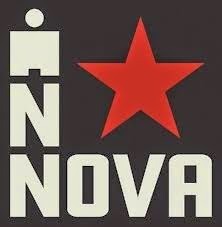 Interspersing original work - like the intricate, four-part, title-track symphony - with often radical interpretations of work by Samuel Barber, Radiohead, Johannes Brahms and Low, volume I: this is not the answer crafts a powerful mix of written and improvised material. Throughout, individual expressions of virtuosity blend seamlessly with Kyle Saulnier’s ever-shifting orchestral textures, and the Awakening Orchestra’s eight years of performing experience come through in the nuanced yet strongly-defined ensemble concept that threads through the record.
Interspersing original work - like the intricate, four-part, title-track symphony - with often radical interpretations of work by Samuel Barber, Radiohead, Johannes Brahms and Low, volume I: this is not the answer crafts a powerful mix of written and improvised material. Throughout, individual expressions of virtuosity blend seamlessly with Kyle Saulnier’s ever-shifting orchestral textures, and the Awakening Orchestra’s eight years of performing experience come through in the nuanced yet strongly-defined ensemble concept that threads through the record.
Excerpt from the overture:

The Awakening Orchestra - Volume I This Is Not the Answer
(Innova Recordings - May 27, 2014)
What was the question?
Composers: Kyle Saulnier, Samuel Barber, Johannes Brahms, Helen Deutsch / Bronislau Kaper, Howard Dietz / Arthur Schwartz, Alan Sparhawk / Low, Brian Wilson / Tony Asher, Thom Yorke / Radiohead
Performers: Kyle Saulnier, The Awakening Orchestra
• Sample & buy the CD here
 Based in the Bronx, New York and originally from Nova Scotia, Kyle Saulnier's original compositions cross genres and boundaries of time and space.
Based in the Bronx, New York and originally from Nova Scotia, Kyle Saulnier's original compositions cross genres and boundaries of time and space.Although it’s right there in the name, it’s not entirely clear whether composer/leader Kyle Saulnier’s Awakening Orchestra is in fact an orchestra, a big band or something entirely and wildly different. Encompassing broad swaths of musical style in both original and recontextualized and re-imagined compositions, the Awakening Orchestra delves deep into traditions from classical to jazz to indie rock on their debut album, volume I: this is not the answer.
this is not the answer - the maestro kyle saulnier speaks
this is not the answer - the maestro speaks from Awakening Orchestra on Vimeo.
 Interspersing original work - like the intricate, four-part, title-track symphony - with often radical interpretations of work by Samuel Barber, Radiohead, Johannes Brahms and Low, volume I: this is not the answer crafts a powerful mix of written and improvised material. Throughout, individual expressions of virtuosity blend seamlessly with Kyle Saulnier’s ever-shifting orchestral textures, and the Awakening Orchestra’s eight years of performing experience come through in the nuanced yet strongly-defined ensemble concept that threads through the record.
Interspersing original work - like the intricate, four-part, title-track symphony - with often radical interpretations of work by Samuel Barber, Radiohead, Johannes Brahms and Low, volume I: this is not the answer crafts a powerful mix of written and improvised material. Throughout, individual expressions of virtuosity blend seamlessly with Kyle Saulnier’s ever-shifting orchestral textures, and the Awakening Orchestra’s eight years of performing experience come through in the nuanced yet strongly-defined ensemble concept that threads through the record.Excerpt from the overture:

Published on June 17, 2014 20:49
CD Release: Ancient Sufi Invocations & Forgotten Songs from Aleppo (Electric Cowbell Records - June 24, 2014)
From a media release:
Last Chants: How a Rock Drummer Became the First to Record the Sounds of Syria's Nearly Lost Spiritual Traditions
Ancient Sufi Invocations & Forgotten Songs from Aleppo
(Electric Cowbell Records - June 24, 2014)
• Pre-order/buy it here
It all began with a bad cell phone connection. Musician and all-around creative instigator Jason Hamacher was about to drive into a tunnel near the DC zoo, when a friend and fellow musician called and said he had to check out “Serbian chant” for a new project the two were involved with.
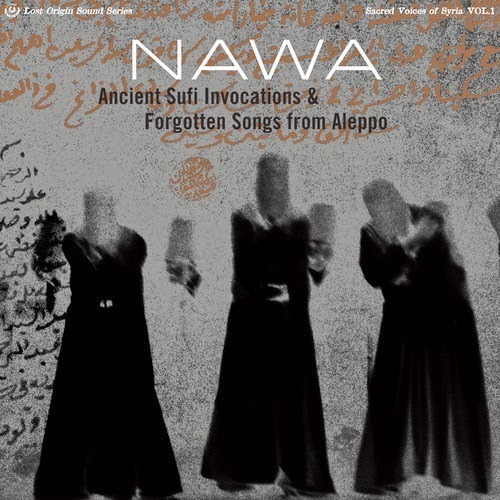 Hamacher heard “Syrian chant.” Then he lost the call. “My mind ran in a thousand different directions in 45 seconds!” Hamacher recalls.
Hamacher heard “Syrian chant.” Then he lost the call. “My mind ran in a thousand different directions in 45 seconds!” Hamacher recalls.That improbable inspiration launched a journey that took the hardcore drummer and photographer on a years-long quest to find and record some of the world’s oldest yet least known liturgical music, in a country that eventually devolved into civil war. Email shots-in-the-dark, ancient Christian chant, secretive Sufi orders: They all led to Sacred Voices of Syria, a series of recordings of rare traditions from one of the cradles of human culture.
Haunting and undeniably spiritual, NAWA: Ancient Sufi Invocations & Forgotten Songs From Aleppo (Lost Origins/Electric Cowbell; updated release: June 17, 2014) is the first volume from the Sacred Voices of Syria and offers a glimpse into a past that has nearly been erased.
“Back in 2005, a couple of friends and I were trying to reinvent ourselves as musicians.” Hamacher recalls. “What we were trying to do was come up with a type of music, or a musical idea, that would bridge gaps.”
As unlikely as it may sound, being a drummer in the Washington DC punk community was the perfect training to become a guerilla documentarian. A pastor’s son, Hamacher made a name for himself in the Washington DC punk scene playing drums in Frodus, Battery, Decahedron and currently Regents. He was molded by the ethics of bands like Minor Threat and Fugazi that valued community, creativity, and social justice over drinking, smoking, drugs, and casual encounters.
Hamacher's musical tastes evolved far beyond rock by digging through record stores the world over hunting for obscure music and interesting album art. At the same time, touring gave him ample time for reading and a random book bought at an airport while on tour set the stage for his later fascination and commitment to Syrian traditions.
“I’d purchased this book on a whim called From the Holy Mountain by writer William Dalrymple,” Hamacher recalls, “which retraced the journey of a Byzantine monk through the Levant.” In the book, Dalrymple encounters the oldest existing Christian chant in a church in Syria, and Hamacher was dying to hear what that sounded like. He decided to get in touch with Dalrymple, thinking surely the author would be able to turn him on to recordings of this ancient music.
He found an email address of someone who could pass on a message to Dalrymple, and didn’t expect to hear back. Surprisingly, the author got back to him a short time later, only to inform him that there were no recordings available. But he left him with a cryptic clue: go to the world’s oldest city, Aleppo, Syria, and give the cab driver these directions.
This hint nagged at Hamacher’s imagination, and dovetailed with another recent adventure. Taking off from a European tour, he had traveled around the Near East taking photographs. During his sojourn in Turkey and the Tur Abdin, he had found himself having lunch with a Syrian Orthodox Archbishop in a 1,700 yr-old monastery. Rather than act on flying into Syria and leaving his fate in the hands of a cab driver, Hamacher attempted to contact the Archbishop with the idea of getting a copy of the music from him.
“I found an email address, info@syrianorthodoxchurch.org, and sent my idea. I got an email back 2 days later from the Syrian Orthodox Archbishop of the United States, inviting me to come and sit with him to discuss the project.” Nervous, Hamacher did, and then asked for a recording of the liturgical chants from Urfa. The Archbishop regretfully informed him that none existed. “I thought to myself, you guys have been doing this for 1800 years and you don’t have a recording yet?” That’s when he decided that if he was going to hear a recording of World's oldest Christian chants, he was going to have to make the darn thing himself.
MUSIC IS SACRED (WAJD: Music, Politics, & Ecstasy - Teaser 2) from Salam Films on Vimeo.
So he started making even more calls, following clue after clue on a huge global detective hunt that seems straight out of a novel. It all lined up, and in 2006 Hamacher made his first trip to Syria to see, hear, and interact with the community that practiced the ancient chant traditions.
On his last trip in 2010, Hamacher had another revelation: “I didn’t record any Islamic chanting!” he laughs. Most of his time had been spent with Syria's Christian and Jewish communities, and now Hamacher felt it was time to delve into Islam. He reached out to contacts from his 2008 trip to Syria and quickly discovered that a violinist friend was the great grandson of the Sheik of a revered Aleppo Sufi order. The violinist made a few calls, and before he knew it Jason was getting out of a car in Aleppo in front of his favorite mosque to record a group of guys who were getting together to practice the older Sufi chant traditions in a 500 year old house a few doors down. He was the first Westerner to witness this very private gathering, and the last to record this group before they were scattered to the four winds by civil war.
 Hamacher is on a mission now, bringing his encounters and experiences to as wide an audience as he can. His efforts led to the 2008 documentary Old Soul which won the 2008 International Documentary Challenge; a book of his Syrian photography entitled, Aleppo, Syria: Witness to an Ancient Legacy; articles for VICE! and the Washington Post; and lectures on Syrian culture. And the biggest project: Hamacher started a record label, Lost Origin Sound Series, releasing a multi-volume series, Sacred Voices of Syria. So far, 4 LP and CD volumes of Sufi, Armenian, Chaldean, and Syriac chant are in the works, as well as the original album of ancient Christian chanting to be released on Smithsonian Folkways.
Hamacher is on a mission now, bringing his encounters and experiences to as wide an audience as he can. His efforts led to the 2008 documentary Old Soul which won the 2008 International Documentary Challenge; a book of his Syrian photography entitled, Aleppo, Syria: Witness to an Ancient Legacy; articles for VICE! and the Washington Post; and lectures on Syrian culture. And the biggest project: Hamacher started a record label, Lost Origin Sound Series, releasing a multi-volume series, Sacred Voices of Syria. So far, 4 LP and CD volumes of Sufi, Armenian, Chaldean, and Syriac chant are in the works, as well as the original album of ancient Christian chanting to be released on Smithsonian Folkways.Yet he’s staying true to his punk roots, holding listening parties at record stores and planning a national speaking tour to bring this lost world to new audiences.
Hamacher hopes others will share his awe of the recordings: “Recording the Nawa album was a moving experience. I returned home with a new perspective on Islam and a deeper connection to Syria. I spent many sleepless nights rocking my then four-month-old daughter to sleep listening and chanting along with the guys of Nawa.”
Ancient Sufi Invocations & Forgotten Songs from Aleppo - Trailer from Lost Origin Productions on Vimeo.

Published on June 17, 2014 20:36
New Release: Dark Hard Chocolate a collection of erotica by Kwame Stephens
With material froma media release:
Dark Hard Chocolate
a collection of erotica
by Kwame Stephens
• Buy the book here
Toronto is the setting for this collection of short fiction erotica from Toronto-based, Ghanian born author and playwright Kwame Stephens.
 The stories look at the black gay experience in Canada seen through the lens of an immigrant, from the teen kicked out of the house to a veteran of the activist days reliving memories down Yonge Street. The erotica is graphic and covers a smorgasbord of gay sex from the first mind blowing encounters to a Rascal Black Vibrating Ass toy and everything in between.
The stories look at the black gay experience in Canada seen through the lens of an immigrant, from the teen kicked out of the house to a veteran of the activist days reliving memories down Yonge Street. The erotica is graphic and covers a smorgasbord of gay sex from the first mind blowing encounters to a Rascal Black Vibrating Ass toy and everything in between.
Kwame's writing is straightforward and readable, unencumbered by excessive description or flowery detail. What he has is a nice sense of observation about this specific slice of the gay experience in Toronto and its night life, from the first flowering of sexual identity to the loneliness of older single men. HIv abuse, love, relationships and more are examined and as immigrants, many of the characters struggle with the dichotomy of a conservative homeland and values and the liberalism of their adopted homeland.
The book gets its title from the last story in the 10 story collection. In 2010, Kwame wrote and produced a stage play called "man 2 man". The tag line for the play was "Damien and Emmanuel's love story". The play followed the challenges two black men faced in negotiating love. The story began with the characters meeting in a church and ended with them marrying.
 The play was staged to sold out audiences in 2010, 2011 and 2012. "After that success," Kwame says, "I began wondering what to do next. I wrote the last story "dark hard chocolate" starting where the play left off at the wedding until the characters returned from their honeymoon."
The play was staged to sold out audiences in 2010, 2011 and 2012. "After that success," Kwame says, "I began wondering what to do next. I wrote the last story "dark hard chocolate" starting where the play left off at the wedding until the characters returned from their honeymoon."
"In my early days as a writer 25 years ago, I enjoyed writing short stories. I decided to write 9 more stories to complete the collection. As I wrote and researched these stories, I noticed an absence of stories about black/African/Canadian gay/bi/inquired men. Dark hard chocolate fills that void.
The cover models (Travis Julius and Ade Johnson) for the book are local men who read the collection and agreed to model for the cover
Dark Hard Chocolate is digitally at Amazon.com. Hard copies will be available for sale at Glad Day Bookshop in Toronto on time for Pride (June 20 - 30 2014).
Dark Hard Chocolate
a collection of erotica
by Kwame Stephens
• Buy the book here
Toronto is the setting for this collection of short fiction erotica from Toronto-based, Ghanian born author and playwright Kwame Stephens.
 The stories look at the black gay experience in Canada seen through the lens of an immigrant, from the teen kicked out of the house to a veteran of the activist days reliving memories down Yonge Street. The erotica is graphic and covers a smorgasbord of gay sex from the first mind blowing encounters to a Rascal Black Vibrating Ass toy and everything in between.
The stories look at the black gay experience in Canada seen through the lens of an immigrant, from the teen kicked out of the house to a veteran of the activist days reliving memories down Yonge Street. The erotica is graphic and covers a smorgasbord of gay sex from the first mind blowing encounters to a Rascal Black Vibrating Ass toy and everything in between.Kwame's writing is straightforward and readable, unencumbered by excessive description or flowery detail. What he has is a nice sense of observation about this specific slice of the gay experience in Toronto and its night life, from the first flowering of sexual identity to the loneliness of older single men. HIv abuse, love, relationships and more are examined and as immigrants, many of the characters struggle with the dichotomy of a conservative homeland and values and the liberalism of their adopted homeland.
The book gets its title from the last story in the 10 story collection. In 2010, Kwame wrote and produced a stage play called "man 2 man". The tag line for the play was "Damien and Emmanuel's love story". The play followed the challenges two black men faced in negotiating love. The story began with the characters meeting in a church and ended with them marrying.
 The play was staged to sold out audiences in 2010, 2011 and 2012. "After that success," Kwame says, "I began wondering what to do next. I wrote the last story "dark hard chocolate" starting where the play left off at the wedding until the characters returned from their honeymoon."
The play was staged to sold out audiences in 2010, 2011 and 2012. "After that success," Kwame says, "I began wondering what to do next. I wrote the last story "dark hard chocolate" starting where the play left off at the wedding until the characters returned from their honeymoon." "In my early days as a writer 25 years ago, I enjoyed writing short stories. I decided to write 9 more stories to complete the collection. As I wrote and researched these stories, I noticed an absence of stories about black/African/Canadian gay/bi/inquired men. Dark hard chocolate fills that void.
The cover models (Travis Julius and Ade Johnson) for the book are local men who read the collection and agreed to model for the cover
Dark Hard Chocolate is digitally at Amazon.com. Hard copies will be available for sale at Glad Day Bookshop in Toronto on time for Pride (June 20 - 30 2014).

Published on June 17, 2014 20:24
June 16, 2014
Jazz/Classical/World Music: CREATIVE MUSIC STUDIO Archive Selections, Vol. 1 (Innova Recordings - April 29, 2014)
With material from a media release:
CREATIVE MUSIC STUDIO
Archive Selections, Vol. 1
(Innova Recordings - April 29, 2014)
• Sample & buy it here
This three-CD set is a compilation of the work of the Creative Music Foundation, a group of like-minded musicians and composers based out of Creative Music Studio in Woodstock, New York.
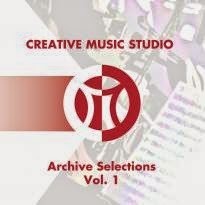 The three CDs include Small Ensembles, Orchestral Music and World Music and come from over 400 hours of music that form the archives of CMS. Alongside a core of founding artists, many of the world's most innovative musicians came to the studio as Guiding Artists.
The three CDs include Small Ensembles, Orchestral Music and World Music and come from over 400 hours of music that form the archives of CMS. Alongside a core of founding artists, many of the world's most innovative musicians came to the studio as Guiding Artists.
The history and details are below - the music is an eclectic collection of jazz/new music/world music with the kind of organic groove you'd expect from a bunch of musicians communing.
A BRIEF HISTORY OF THE CREATIVE MUSIC STUDIO
Most fans of jazz and improvised music from the 1970s and on know of the various musical collectives that formed in a number of cities. Groups like Chicago's AACM, the Black Artists Group in St. Louis and the loft scene in New York City were centers of fervent creativity for the music. This CD set concentrates on an equally influential axis of musical experimentation based at the Creative Music Studio in Woodstock, New York. The vision for CMS is best described as creating collective synergy, having musicians from separate regions and backgrounds live and work together as they find common ground and develop a personal musical vocabulary. The Guiding Artists who participated in CMS ranged from artists rooted in jazz, such as Charles Brackeen and Oliver Lake, to artists coming at improvisation from the classical side, such as pianists Ursula Oppens and Fred Rziewski. "Any person in today's music scene knows that rock, classical, folk and jazz are all yesterday's titles," declared Creative Music Foundation co-founder Ornette Coleman. "I feel that the music world is getting closer to being a singular expression, one with endless musical stories of mankind."
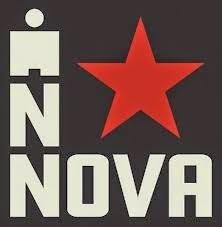 In addition to Ornette, CMS was founded in 1971 by Karl Berger and Ingrid vFuller, John Cage and Gil Evans. By the time it closed its 45-acre physical campus in 1984, the Studio had brought in nearly all of the leading lights of the creative music world as Guiding Artists. Musicians like Turkey?s Ismet Siral and Brazil's Nana Vasconcelos came to CMS and added into the mix the musical traditions of their countries, helping to create the ?elements common to all music? described in the Studio's philosophy. Central to the growth of what became world music was trumpeter Don Cherry, a frequent presence at CMS. Five Guiding Artists - George Lewis, John Zorn, Charlie Haden, Cecil Taylor and John Cage- went on to become recipients of MacArthur Fellowships. While some musicians participated only in brief workshops and others came and lived at CMS for years, thousands of CMS participants were influenced by its spirit of freedom, exploration and collaboration.
In addition to Ornette, CMS was founded in 1971 by Karl Berger and Ingrid vFuller, John Cage and Gil Evans. By the time it closed its 45-acre physical campus in 1984, the Studio had brought in nearly all of the leading lights of the creative music world as Guiding Artists. Musicians like Turkey?s Ismet Siral and Brazil's Nana Vasconcelos came to CMS and added into the mix the musical traditions of their countries, helping to create the ?elements common to all music? described in the Studio's philosophy. Central to the growth of what became world music was trumpeter Don Cherry, a frequent presence at CMS. Five Guiding Artists - George Lewis, John Zorn, Charlie Haden, Cecil Taylor and John Cage- went on to become recipients of MacArthur Fellowships. While some musicians participated only in brief workshops and others came and lived at CMS for years, thousands of CMS participants were influenced by its spirit of freedom, exploration and collaboration.
After the CMS campus closed, Karl and Ingrid stayed in Woodstock and have continued to play concerts and conduct workshops, including Karl's recent work with a newly constituted Improvisers Orchestra. For over a decade, the couple took the concepts they developed at CMS all over the world, exposing musicians from Africa and India to Asia and South America to the insights gained at CMS.
During the CMS years, the Studio had recorded well over four hundred hours of performances and workshops, a rich archive that CMS has been digitizing and re-mastering. The Creative Music Foundation has partnered with Columbia University's Library to preserve the CMS Archive for posterity. CMS is giving Columbia the full archive of recorded tapes, along with memorabilia and photographs from CMS. You are holding the first of the several CD sets of this exciting project. According to Berger, "We believe these compilations will present a vivid picture of CMS in very listenable CDs, selected for their outstanding artistic excellence, in the free-wheeling spirit of the Creative Music Studio. We have hand-picked each piece of this compilation for its musical vibrancy, historical interest and intersection with the other artists."
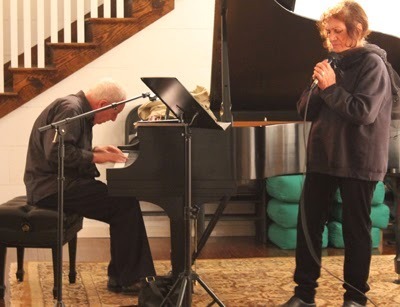 This CD box set contains interviews with the artists who made the recordings (or people close to them.) These interviews, conducted as part of the CMS Oral History Project, aim to gather directly from CMS Guiding Artists and participants their anecdotes and insights from their time at CMS. Conducted in partnership with Columbia University and WKCR-FM (NYC), these oral histories fill a void in the historical retelling of this important and fertile time in music and education, and are continued in more detail at: http://www.creativemusicfoundation.org/oral-history-project.html.
This CD box set contains interviews with the artists who made the recordings (or people close to them.) These interviews, conducted as part of the CMS Oral History Project, aim to gather directly from CMS Guiding Artists and participants their anecdotes and insights from their time at CMS. Conducted in partnership with Columbia University and WKCR-FM (NYC), these oral histories fill a void in the historical retelling of this important and fertile time in music and education, and are continued in more detail at: http://www.creativemusicfoundation.org/oral-history-project.html.
The Creative Music Studio was fertile ground for education and music-making. Musicians from all over the world have credited CMS as some of the most exciting, innovative and important experiences they have had, not only as musicians, but also as people. The stories are endless but unfortunately the lives of the storytellers are not. In fact, some of CMS?s greatest storytellers, such as Don Cherry or John Cage, have died, and with them their tales about CMS and its impact on their musical careers and lives. The Creative Music Foundation aims to conduct 10 interviews annually as part of its Oral History Project, with transcripts as well as audio/video recordings eventually available on its website.
Artists:
Ed Blackwell/Charles Brackeen
Ed Blackwell's drumming, shaped by his New Orleans background, was the backbone of Ornette Coleman's revolutionary advances in jazz. Here he is paired with Charles Brackeen, a sax player from Oklahoma who was active until the mid-2000s. Their duet conversations dart and weave in a playful and masterful way.
David Izenson, Karl Berger, Ingrid Sertso
Like Blackwell, bass player Izenson was an Ornette Coleman sideman and a CMS Guiding Artist before his untimely death at age 47 in 1979. His work here with Berger and Sertso creates an airy feel, fed by Sertso's poetic vocals. (Karl Berger & Ingrid Sertso pictured above)
 Ursula Oppens/Frederic Rzewski
Ursula Oppens/Frederic Rzewski
CMS was a big tent that attracted classically-trained musicians like Oppens and Rzewski, whose careers in experimental classical music have included crossover collaborations with jazz musicians such as Anthony Davis and Anthony Braxton. Oppens (pictured right) had a more intimate connection to jazz through her personal relationship with the late sax player Julius Hemphill, also a brilliant musician and a CMS Guiding Artist.
James Emery/Leroy Jenkins
In their duet tracks, guitarist Emery and violin player Jenkins create a fascinating variety of textures and moods. Along with Billy Bang, Jenkins revived the use of the violin in jazz, taking it far beyond where players like Stuff Smith and Joe Venuti had left it. Jenkins invited Emery to New York in 1973 and they were soon active in CMS.
Oliver Lake
Lake, an alto sax player with a career that has seen collaborations with a broad array of other artists, was a CMS Guiding Artist from 1975 to 1984. The tracks here show the range of Lake's skills as a player, with his piercing tone, and as a composer who can move successfully in any number of directions and still hold the listener?s interest. (pictured below)
Olu Dara
Like his fellow Guiding Artists, trumpeter Olu Dara credits CMS with being a seminal part of his development. Dara started in the free jazz tradition but branched out in the late 90s into a style that incorporates blues, funk, rock and reggae. He is in top form on the tracks presented here, his playing at times dominating the group and at times reacting to it. It is also a rare opportunity to hear Dara working with a large ensemble and playing harmonica.
times dominating the group and at times reacting to it. It is also a rare opportunity to hear Dara working with a large ensemble and playing harmonica.
Roscoe Mitchell
Like Oliver Lake, Roscoe Mitchell is a senior statesman of jazz with a career as equally varied and full of exploration. Mitchell taught composition at CMS, inspiring a new generation of composers. His piece here moves between moods and instrumentation with a master's touch.
Ismet Siral
Siral was a jazz innovator in his native Turkey, participating in some of the earliest jazz groups there in 1953. While on vacation in New York with Don Cherry in 1978, he and Cherry visited CMS and Siral became a fixture at the Studio for two years. The tracks presented here show Siral's ability to blend improvisation and traditional Turkish forms.
Nana Vasconcelos
Vasconcelos brought from Brazil his skills as a percussionist and player of the berimbau, a highly expressive Brazilian instrument heard on one of these tracks. The other track showcases the call and response pattern heard in Brazilian vocal music and in many jazz compositions.
 Foday Musa Suso
Foday Musa Suso
Suso, a kora player born in Gambia and based in Ghana, formed the Mandingo Griot Society in the late 70s along with drummer Hamid Drake, percussionist Adam Rudolph and bass player John Marsh, all artists associated with CMS, all with flexible musical boundaries. Foday is a direct descendent of Jali Madi Wlen Suso, the griot who invented the kora over four centuries ago.

CREATIVE MUSIC STUDIO
Archive Selections, Vol. 1
(Innova Recordings - April 29, 2014)
• Sample & buy it here
This three-CD set is a compilation of the work of the Creative Music Foundation, a group of like-minded musicians and composers based out of Creative Music Studio in Woodstock, New York.
 The three CDs include Small Ensembles, Orchestral Music and World Music and come from over 400 hours of music that form the archives of CMS. Alongside a core of founding artists, many of the world's most innovative musicians came to the studio as Guiding Artists.
The three CDs include Small Ensembles, Orchestral Music and World Music and come from over 400 hours of music that form the archives of CMS. Alongside a core of founding artists, many of the world's most innovative musicians came to the studio as Guiding Artists.The history and details are below - the music is an eclectic collection of jazz/new music/world music with the kind of organic groove you'd expect from a bunch of musicians communing.
A BRIEF HISTORY OF THE CREATIVE MUSIC STUDIO
Most fans of jazz and improvised music from the 1970s and on know of the various musical collectives that formed in a number of cities. Groups like Chicago's AACM, the Black Artists Group in St. Louis and the loft scene in New York City were centers of fervent creativity for the music. This CD set concentrates on an equally influential axis of musical experimentation based at the Creative Music Studio in Woodstock, New York. The vision for CMS is best described as creating collective synergy, having musicians from separate regions and backgrounds live and work together as they find common ground and develop a personal musical vocabulary. The Guiding Artists who participated in CMS ranged from artists rooted in jazz, such as Charles Brackeen and Oliver Lake, to artists coming at improvisation from the classical side, such as pianists Ursula Oppens and Fred Rziewski. "Any person in today's music scene knows that rock, classical, folk and jazz are all yesterday's titles," declared Creative Music Foundation co-founder Ornette Coleman. "I feel that the music world is getting closer to being a singular expression, one with endless musical stories of mankind."
 In addition to Ornette, CMS was founded in 1971 by Karl Berger and Ingrid vFuller, John Cage and Gil Evans. By the time it closed its 45-acre physical campus in 1984, the Studio had brought in nearly all of the leading lights of the creative music world as Guiding Artists. Musicians like Turkey?s Ismet Siral and Brazil's Nana Vasconcelos came to CMS and added into the mix the musical traditions of their countries, helping to create the ?elements common to all music? described in the Studio's philosophy. Central to the growth of what became world music was trumpeter Don Cherry, a frequent presence at CMS. Five Guiding Artists - George Lewis, John Zorn, Charlie Haden, Cecil Taylor and John Cage- went on to become recipients of MacArthur Fellowships. While some musicians participated only in brief workshops and others came and lived at CMS for years, thousands of CMS participants were influenced by its spirit of freedom, exploration and collaboration.
In addition to Ornette, CMS was founded in 1971 by Karl Berger and Ingrid vFuller, John Cage and Gil Evans. By the time it closed its 45-acre physical campus in 1984, the Studio had brought in nearly all of the leading lights of the creative music world as Guiding Artists. Musicians like Turkey?s Ismet Siral and Brazil's Nana Vasconcelos came to CMS and added into the mix the musical traditions of their countries, helping to create the ?elements common to all music? described in the Studio's philosophy. Central to the growth of what became world music was trumpeter Don Cherry, a frequent presence at CMS. Five Guiding Artists - George Lewis, John Zorn, Charlie Haden, Cecil Taylor and John Cage- went on to become recipients of MacArthur Fellowships. While some musicians participated only in brief workshops and others came and lived at CMS for years, thousands of CMS participants were influenced by its spirit of freedom, exploration and collaboration. After the CMS campus closed, Karl and Ingrid stayed in Woodstock and have continued to play concerts and conduct workshops, including Karl's recent work with a newly constituted Improvisers Orchestra. For over a decade, the couple took the concepts they developed at CMS all over the world, exposing musicians from Africa and India to Asia and South America to the insights gained at CMS.
During the CMS years, the Studio had recorded well over four hundred hours of performances and workshops, a rich archive that CMS has been digitizing and re-mastering. The Creative Music Foundation has partnered with Columbia University's Library to preserve the CMS Archive for posterity. CMS is giving Columbia the full archive of recorded tapes, along with memorabilia and photographs from CMS. You are holding the first of the several CD sets of this exciting project. According to Berger, "We believe these compilations will present a vivid picture of CMS in very listenable CDs, selected for their outstanding artistic excellence, in the free-wheeling spirit of the Creative Music Studio. We have hand-picked each piece of this compilation for its musical vibrancy, historical interest and intersection with the other artists."
 This CD box set contains interviews with the artists who made the recordings (or people close to them.) These interviews, conducted as part of the CMS Oral History Project, aim to gather directly from CMS Guiding Artists and participants their anecdotes and insights from their time at CMS. Conducted in partnership with Columbia University and WKCR-FM (NYC), these oral histories fill a void in the historical retelling of this important and fertile time in music and education, and are continued in more detail at: http://www.creativemusicfoundation.org/oral-history-project.html.
This CD box set contains interviews with the artists who made the recordings (or people close to them.) These interviews, conducted as part of the CMS Oral History Project, aim to gather directly from CMS Guiding Artists and participants their anecdotes and insights from their time at CMS. Conducted in partnership with Columbia University and WKCR-FM (NYC), these oral histories fill a void in the historical retelling of this important and fertile time in music and education, and are continued in more detail at: http://www.creativemusicfoundation.org/oral-history-project.html.The Creative Music Studio was fertile ground for education and music-making. Musicians from all over the world have credited CMS as some of the most exciting, innovative and important experiences they have had, not only as musicians, but also as people. The stories are endless but unfortunately the lives of the storytellers are not. In fact, some of CMS?s greatest storytellers, such as Don Cherry or John Cage, have died, and with them their tales about CMS and its impact on their musical careers and lives. The Creative Music Foundation aims to conduct 10 interviews annually as part of its Oral History Project, with transcripts as well as audio/video recordings eventually available on its website.
Artists:
Ed Blackwell/Charles Brackeen
Ed Blackwell's drumming, shaped by his New Orleans background, was the backbone of Ornette Coleman's revolutionary advances in jazz. Here he is paired with Charles Brackeen, a sax player from Oklahoma who was active until the mid-2000s. Their duet conversations dart and weave in a playful and masterful way.
David Izenson, Karl Berger, Ingrid Sertso
Like Blackwell, bass player Izenson was an Ornette Coleman sideman and a CMS Guiding Artist before his untimely death at age 47 in 1979. His work here with Berger and Sertso creates an airy feel, fed by Sertso's poetic vocals. (Karl Berger & Ingrid Sertso pictured above)
 Ursula Oppens/Frederic Rzewski
Ursula Oppens/Frederic RzewskiCMS was a big tent that attracted classically-trained musicians like Oppens and Rzewski, whose careers in experimental classical music have included crossover collaborations with jazz musicians such as Anthony Davis and Anthony Braxton. Oppens (pictured right) had a more intimate connection to jazz through her personal relationship with the late sax player Julius Hemphill, also a brilliant musician and a CMS Guiding Artist.
James Emery/Leroy Jenkins
In their duet tracks, guitarist Emery and violin player Jenkins create a fascinating variety of textures and moods. Along with Billy Bang, Jenkins revived the use of the violin in jazz, taking it far beyond where players like Stuff Smith and Joe Venuti had left it. Jenkins invited Emery to New York in 1973 and they were soon active in CMS.
Oliver Lake
Lake, an alto sax player with a career that has seen collaborations with a broad array of other artists, was a CMS Guiding Artist from 1975 to 1984. The tracks here show the range of Lake's skills as a player, with his piercing tone, and as a composer who can move successfully in any number of directions and still hold the listener?s interest. (pictured below)
Olu Dara
Like his fellow Guiding Artists, trumpeter Olu Dara credits CMS with being a seminal part of his development. Dara started in the free jazz tradition but branched out in the late 90s into a style that incorporates blues, funk, rock and reggae. He is in top form on the tracks presented here, his playing at
 times dominating the group and at times reacting to it. It is also a rare opportunity to hear Dara working with a large ensemble and playing harmonica.
times dominating the group and at times reacting to it. It is also a rare opportunity to hear Dara working with a large ensemble and playing harmonica. Roscoe Mitchell
Like Oliver Lake, Roscoe Mitchell is a senior statesman of jazz with a career as equally varied and full of exploration. Mitchell taught composition at CMS, inspiring a new generation of composers. His piece here moves between moods and instrumentation with a master's touch.
Ismet Siral
Siral was a jazz innovator in his native Turkey, participating in some of the earliest jazz groups there in 1953. While on vacation in New York with Don Cherry in 1978, he and Cherry visited CMS and Siral became a fixture at the Studio for two years. The tracks presented here show Siral's ability to blend improvisation and traditional Turkish forms.
Nana Vasconcelos
Vasconcelos brought from Brazil his skills as a percussionist and player of the berimbau, a highly expressive Brazilian instrument heard on one of these tracks. The other track showcases the call and response pattern heard in Brazilian vocal music and in many jazz compositions.
 Foday Musa Suso
Foday Musa SusoSuso, a kora player born in Gambia and based in Ghana, formed the Mandingo Griot Society in the late 70s along with drummer Hamid Drake, percussionist Adam Rudolph and bass player John Marsh, all artists associated with CMS, all with flexible musical boundaries. Foday is a direct descendent of Jali Madi Wlen Suso, the griot who invented the kora over four centuries ago.

Published on June 16, 2014 12:58
Dusk Dances Celebrates 20 Years August 4 to 10 2014 in Toronto
From a media release
DUSK DANCES CELEBRATES 20 YEARS
August 4 to 10, 2014
at Winthrow Park (Toronto)
Dusk Dances, Toronto’s inescapable summer dance festival, is celebrating its 20th anniversary season. Dusk Dances Festival returns to Toronto’s Withrow Park from August 4-10, 2014 presenting six exciting dance pieces which are sure to exhilarate and fascinate audiences.
pieces which are sure to exhilarate and fascinate audiences.
Featuring the artistry of internationally acclaimed dancers and choreographers, the 2014 season will be as entertaining and innovating as any season we've ever presented.
Hosted by the incomparable Dan Watson, this year's program features new and remounted works from Canadian artists with an immense breadth of experience:
- Sylvie Bouchard - BoucharDanse (Toronto) with “La vie”.The terrains of our lives vary from rivers, to meadows, to mountains, but the pounding of our own heart is something we should always remember to trust.
- Peter Chin - Tribal Crackling Wind (Toronto) with “Through the Mask”. A classical mask dancer from Central Java and Cambodia meet in their dance regalia, perform their traditional dances of power and fierceness.
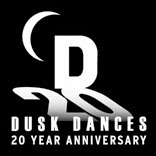 - Julia Aplin (Toronto) with “Inner City Sirens, Part II”. Reigning World Champions in the sport of pairs synchronized swimming for petite pools!
- Julia Aplin (Toronto) with “Inner City Sirens, Part II”. Reigning World Champions in the sport of pairs synchronized swimming for petite pools!
- Milan Gervais - Human Playground (Montreal) with “Platoon”. They are four, in flight. Four women following a common path. Inspired by trajectories of bird flight and platoons of cyclists, this 10 minute female quartet is made to be experienced in an outdoor urban setting.
- Sis Robin Hibbert - COBA (Toronto) with “Doun Doun Dance”. A playful tribute to Guinea’s spirited Ku-Ku rhythm and the high-octane stick-drum dance traditionally performed by women from the Forest Region, Ku-Ku is played to mark the end of the harvest.
- Kate Franklin and Meredith Thompson (Toronto) with “Incandescent”. Inspired by the lyrics of Leonard Cohen's Anthem, that involves five professional dancers and a large cast of movers of all ages and dance experience.
 Dusk Dances is an outdoor dance festival that brings high quality contemporary and traditional dance to public parks. As dusk descends, a theatrical host leads the audience - which invariably includes children, dog walkers and local residents - to eclectic dance pieces that unfold in different areas of the park. Choreographers from various backgrounds are invited to create a 10-minute dance piece inspired by the park’s natural environment. Audiences are invited on a pay-what-you-can basis to an innovative site-specific festival, which is not only an artistic event but a social and cultural one as well.
Dusk Dances is an outdoor dance festival that brings high quality contemporary and traditional dance to public parks. As dusk descends, a theatrical host leads the audience - which invariably includes children, dog walkers and local residents - to eclectic dance pieces that unfold in different areas of the park. Choreographers from various backgrounds are invited to create a 10-minute dance piece inspired by the park’s natural environment. Audiences are invited on a pay-what-you-can basis to an innovative site-specific festival, which is not only an artistic event but a social and cultural one as well.
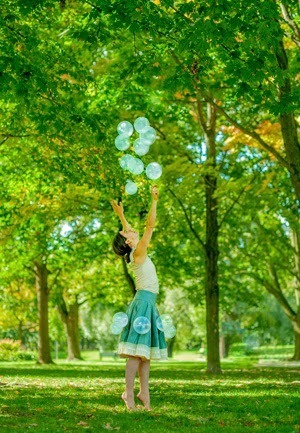 BE ENCHANTED! - DUSK DANCES 2014, Festival Director Sylvie Bouchard
BE ENCHANTED! - DUSK DANCES 2014, Festival Director Sylvie Bouchard
August 4-10 - Withrow Park (South of Danforth between Logan and Carlaw)
Performances nightly at 7:00 PM & Additional Thursday and Sunday Matinées at 2pm
* Incandescent and Through the Mask will not be performed on the 2 matinée performances
Admission is PAY-WHAT-YOU-CAN - $10 suggested minimum donation
Images:
Mairéad Filgate in La vie (choreographer Sylvie Bouchard, BoucharDanse) by John Lauener
Incandescent

DUSK DANCES CELEBRATES 20 YEARS
August 4 to 10, 2014
at Winthrow Park (Toronto)
Dusk Dances, Toronto’s inescapable summer dance festival, is celebrating its 20th anniversary season. Dusk Dances Festival returns to Toronto’s Withrow Park from August 4-10, 2014 presenting six exciting dance
 pieces which are sure to exhilarate and fascinate audiences.
pieces which are sure to exhilarate and fascinate audiences.Featuring the artistry of internationally acclaimed dancers and choreographers, the 2014 season will be as entertaining and innovating as any season we've ever presented.
Hosted by the incomparable Dan Watson, this year's program features new and remounted works from Canadian artists with an immense breadth of experience:
- Sylvie Bouchard - BoucharDanse (Toronto) with “La vie”.The terrains of our lives vary from rivers, to meadows, to mountains, but the pounding of our own heart is something we should always remember to trust.
- Peter Chin - Tribal Crackling Wind (Toronto) with “Through the Mask”. A classical mask dancer from Central Java and Cambodia meet in their dance regalia, perform their traditional dances of power and fierceness.
 - Julia Aplin (Toronto) with “Inner City Sirens, Part II”. Reigning World Champions in the sport of pairs synchronized swimming for petite pools!
- Julia Aplin (Toronto) with “Inner City Sirens, Part II”. Reigning World Champions in the sport of pairs synchronized swimming for petite pools!- Milan Gervais - Human Playground (Montreal) with “Platoon”. They are four, in flight. Four women following a common path. Inspired by trajectories of bird flight and platoons of cyclists, this 10 minute female quartet is made to be experienced in an outdoor urban setting.
- Sis Robin Hibbert - COBA (Toronto) with “Doun Doun Dance”. A playful tribute to Guinea’s spirited Ku-Ku rhythm and the high-octane stick-drum dance traditionally performed by women from the Forest Region, Ku-Ku is played to mark the end of the harvest.
- Kate Franklin and Meredith Thompson (Toronto) with “Incandescent”. Inspired by the lyrics of Leonard Cohen's Anthem, that involves five professional dancers and a large cast of movers of all ages and dance experience.
 Dusk Dances is an outdoor dance festival that brings high quality contemporary and traditional dance to public parks. As dusk descends, a theatrical host leads the audience - which invariably includes children, dog walkers and local residents - to eclectic dance pieces that unfold in different areas of the park. Choreographers from various backgrounds are invited to create a 10-minute dance piece inspired by the park’s natural environment. Audiences are invited on a pay-what-you-can basis to an innovative site-specific festival, which is not only an artistic event but a social and cultural one as well.
Dusk Dances is an outdoor dance festival that brings high quality contemporary and traditional dance to public parks. As dusk descends, a theatrical host leads the audience - which invariably includes children, dog walkers and local residents - to eclectic dance pieces that unfold in different areas of the park. Choreographers from various backgrounds are invited to create a 10-minute dance piece inspired by the park’s natural environment. Audiences are invited on a pay-what-you-can basis to an innovative site-specific festival, which is not only an artistic event but a social and cultural one as well. BE ENCHANTED! - DUSK DANCES 2014, Festival Director Sylvie Bouchard
BE ENCHANTED! - DUSK DANCES 2014, Festival Director Sylvie BouchardAugust 4-10 - Withrow Park (South of Danforth between Logan and Carlaw)
Performances nightly at 7:00 PM & Additional Thursday and Sunday Matinées at 2pm
* Incandescent and Through the Mask will not be performed on the 2 matinée performances
Admission is PAY-WHAT-YOU-CAN - $10 suggested minimum donation
Images:
Mairéad Filgate in La vie (choreographer Sylvie Bouchard, BoucharDanse) by John Lauener
Incandescent

Published on June 16, 2014 07:17
New Single by Nadjiwan: Broken Treaty Blues (June 17, 2014)
From a media release:
‘Broken Treaty Blues’ – the new single by NADJIWAN
June 17th, 2014
• Available as a free download
The latest release by multiple award-nominated artist Marc Meriläinen a.k.a.NADJIWAN was written & recorded at Marc’s home studio in Toronto’s west end neighbourhood on Roncesvalles.
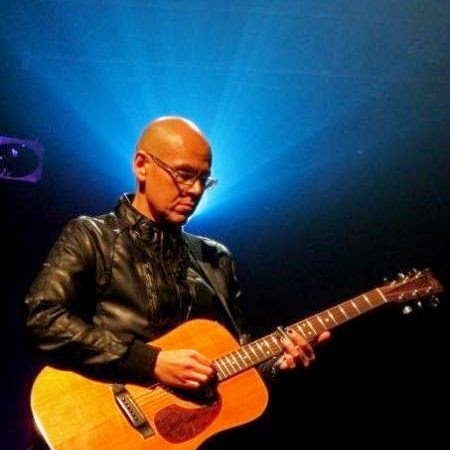 Marc’s last release ‘Idle No More’ came out March 2013 and although he had been planning to record & release more material that year, it just never materialized due to Marc’s busy schedule. Over the past year Marc has worked on various projects including composition for theatre and film as well as producing 2 records. Additionally Marc has been working with musicians in his ‘hood’ producing and recording demos at his home studio.
Marc’s last release ‘Idle No More’ came out March 2013 and although he had been planning to record & release more material that year, it just never materialized due to Marc’s busy schedule. Over the past year Marc has worked on various projects including composition for theatre and film as well as producing 2 records. Additionally Marc has been working with musicians in his ‘hood’ producing and recording demos at his home studio.
‘Broken Treaty Blues’ was written and recorded in a day with Marc performing all of the instruments. “I needed to do this an exercise – I needed to keep ‘in shape’
musically”, indicates Marc.
Keep an ear open fort the ‘B-side’ of this single coming out later this summer as well as in 2015 it’s the 20th anniversary of ‘Brother’ the first NADJIWAN release. A special event and tour is currently being planned with special guests covering songs from that record.
Meriläinen Music - Check us out on Facebook

‘Broken Treaty Blues’ – the new single by NADJIWAN
June 17th, 2014
• Available as a free download
The latest release by multiple award-nominated artist Marc Meriläinen a.k.a.NADJIWAN was written & recorded at Marc’s home studio in Toronto’s west end neighbourhood on Roncesvalles.
 Marc’s last release ‘Idle No More’ came out March 2013 and although he had been planning to record & release more material that year, it just never materialized due to Marc’s busy schedule. Over the past year Marc has worked on various projects including composition for theatre and film as well as producing 2 records. Additionally Marc has been working with musicians in his ‘hood’ producing and recording demos at his home studio.
Marc’s last release ‘Idle No More’ came out March 2013 and although he had been planning to record & release more material that year, it just never materialized due to Marc’s busy schedule. Over the past year Marc has worked on various projects including composition for theatre and film as well as producing 2 records. Additionally Marc has been working with musicians in his ‘hood’ producing and recording demos at his home studio.‘Broken Treaty Blues’ was written and recorded in a day with Marc performing all of the instruments. “I needed to do this an exercise – I needed to keep ‘in shape’
musically”, indicates Marc.
Keep an ear open fort the ‘B-side’ of this single coming out later this summer as well as in 2015 it’s the 20th anniversary of ‘Brother’ the first NADJIWAN release. A special event and tour is currently being planned with special guests covering songs from that record.
Meriläinen Music - Check us out on Facebook

Published on June 16, 2014 07:08
Kyoto University of Art and Design (KUAD) releases digital English edition of URYU June 13, 2014
From a media release:
On architecture, photography & more:
Kyoto University of Art and Design (KUAD)
releases digital English edition of URYU
June 13, 2014
• Buy the magazine
Kyoto, June 13, 2014: Kyoto University of Art and Design (KUAD) released the digital English edition of its university magazine “URYU” worldwide on June 13, 2014.
 The English edition of “URYU” features translated articles of “URYU TSUSHIN,” the Japanese edition issued three times a year. This university magazine functions as active learning opportunities for university students who learn editorial skills, photography and editorial design under the guidance by its professor Keiichi Kadosaki, a renowned editor in Japan, and Mr. Yusuke Mimasu, a highly regarded young designer.
The English edition of “URYU” features translated articles of “URYU TSUSHIN,” the Japanese edition issued three times a year. This university magazine functions as active learning opportunities for university students who learn editorial skills, photography and editorial design under the guidance by its professor Keiichi Kadosaki, a renowned editor in Japan, and Mr. Yusuke Mimasu, a highly regarded young designer.
The first English edition is the translation of two feature articles of “URYU TSUSHIN” Vol. 61 issued on April 3, 2014.
The first article focuses on Professor Shigeru Ban, who will receive the 2014 Pritzker Architecture Prize, “the Nobel Prize of Architecture,” at the ceremony scheduled on June 13, 2014, at the Rijksmuseum in Amsterdam. It reveals Ban’s three faces: a world renowned architect, a supporter of disaster-stricken areas, and an educator in the university.
The other article focuses on Mr. Shimpei Mito, a graduate photographer who recently draws wide attention for his street style shots of models off the runway at Fashion Weeks around the world.
The editorial team is now working on the Japanese edition Vol. 62 featuring Professor Miwa Yanagi, one of Japan’s leading contemporary artists, who is scheduled to work on many art projects including the Yokohama Triennale from August 1, 2014, PARASOPHIA - Kyoto International Festival of Contemporary Culture from March 7, 2015, Performing Arts Projects in the U.S. and in Japan, among others. This article will also be published in the next English edition.
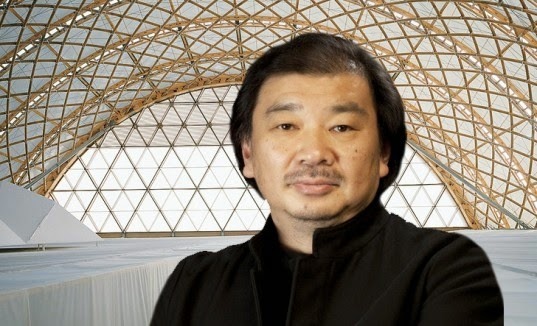 The English edition “URYU” volume 1 is now on sale from Amazon Kindle Store for $2.99 in the U.S. (amazon.com), £1.83 in U.K. (amazon.co.uk), AUD$3.20 in Australia (Amazon.com.au), CDN$3.27 in Canada (Amazon.ca), EUR 2,26 in Germany (Amazon.de), among others.
The English edition “URYU” volume 1 is now on sale from Amazon Kindle Store for $2.99 in the U.S. (amazon.com), £1.83 in U.K. (amazon.co.uk), AUD$3.20 in Australia (Amazon.com.au), CDN$3.27 in Canada (Amazon.ca), EUR 2,26 in Germany (Amazon.de), among others.
URYU - Kyoto University of Art and Design Magazine
* English edition of “URYU TSUSHIN (Vol. 61),” the Japanese edition of Kyoto University of Art and Design Magazine issued on April 3, 2014.
Publisher: Kyoto University of Art and Design
Address: 2-116 Uryuyama Kitashirakawa, Sakyo-ku, Kyoto 606-8271, Japan
URL: http://www.kyoto-art.ac.jp/en/
On architecture, photography & more:
Kyoto University of Art and Design (KUAD)
releases digital English edition of URYU
June 13, 2014
• Buy the magazine
Kyoto, June 13, 2014: Kyoto University of Art and Design (KUAD) released the digital English edition of its university magazine “URYU” worldwide on June 13, 2014.
 The English edition of “URYU” features translated articles of “URYU TSUSHIN,” the Japanese edition issued three times a year. This university magazine functions as active learning opportunities for university students who learn editorial skills, photography and editorial design under the guidance by its professor Keiichi Kadosaki, a renowned editor in Japan, and Mr. Yusuke Mimasu, a highly regarded young designer.
The English edition of “URYU” features translated articles of “URYU TSUSHIN,” the Japanese edition issued three times a year. This university magazine functions as active learning opportunities for university students who learn editorial skills, photography and editorial design under the guidance by its professor Keiichi Kadosaki, a renowned editor in Japan, and Mr. Yusuke Mimasu, a highly regarded young designer.The first English edition is the translation of two feature articles of “URYU TSUSHIN” Vol. 61 issued on April 3, 2014.
The first article focuses on Professor Shigeru Ban, who will receive the 2014 Pritzker Architecture Prize, “the Nobel Prize of Architecture,” at the ceremony scheduled on June 13, 2014, at the Rijksmuseum in Amsterdam. It reveals Ban’s three faces: a world renowned architect, a supporter of disaster-stricken areas, and an educator in the university.
The other article focuses on Mr. Shimpei Mito, a graduate photographer who recently draws wide attention for his street style shots of models off the runway at Fashion Weeks around the world.
The editorial team is now working on the Japanese edition Vol. 62 featuring Professor Miwa Yanagi, one of Japan’s leading contemporary artists, who is scheduled to work on many art projects including the Yokohama Triennale from August 1, 2014, PARASOPHIA - Kyoto International Festival of Contemporary Culture from March 7, 2015, Performing Arts Projects in the U.S. and in Japan, among others. This article will also be published in the next English edition.
 The English edition “URYU” volume 1 is now on sale from Amazon Kindle Store for $2.99 in the U.S. (amazon.com), £1.83 in U.K. (amazon.co.uk), AUD$3.20 in Australia (Amazon.com.au), CDN$3.27 in Canada (Amazon.ca), EUR 2,26 in Germany (Amazon.de), among others.
The English edition “URYU” volume 1 is now on sale from Amazon Kindle Store for $2.99 in the U.S. (amazon.com), £1.83 in U.K. (amazon.co.uk), AUD$3.20 in Australia (Amazon.com.au), CDN$3.27 in Canada (Amazon.ca), EUR 2,26 in Germany (Amazon.de), among others.URYU - Kyoto University of Art and Design Magazine
* English edition of “URYU TSUSHIN (Vol. 61),” the Japanese edition of Kyoto University of Art and Design Magazine issued on April 3, 2014.
Publisher: Kyoto University of Art and Design
Address: 2-116 Uryuyama Kitashirakawa, Sakyo-ku, Kyoto 606-8271, Japan
URL: http://www.kyoto-art.ac.jp/en/

Published on June 16, 2014 07:04
Danish Design: Eyewear from Orgreen Optics
From a release:
Danish Design: Eyewear from Orgreen Optics
 I was brought up on Danish contemporary furniture so I was interested when a notice showed up in my email last week from Orgreen Optics of Denmark about their SS ´14 collection.
I was brought up on Danish contemporary furniture so I was interested when a notice showed up in my email last week from Orgreen Optics of Denmark about their SS ´14 collection.
From Orgreen:
All frames are made of titanium, a precious metal in a superb quality designed to last. Colours are exquisitely composed in an array of opposites, including industrial hues fused with high-brow tones. Designed and developed in Denmark, each frame is handcrafted in Japan, and strives to be timeless and seasonless, but not without history.
Stylists: if you have any shoots coming up where sunglasses/glasses would be interesting for your styling. Please note that we deliver day to day with UPS.
 Best from sunny Copenhagen :-)
Best from sunny Copenhagen :-)
(and no, sadly, I didn't get a free pair... :( )
About Ørgreen Optics: Premium designer eyewear in high-end materials, known for its signature style and innovative colour combinations. Founded in Copenhagen in 1997, our aim is to design strong and timeless frames for quality-conscious individuals all over the world.
The Ørgreen trademark is our prescription eyewear and sunglasses, made in titanium and beta-titanium: precious metals in a superb quality designed to last. Our collections are designed and developed in Denmark and made by hand in Japan, known and respected for high standards and irrefutable quality. Individually crafted with more than 100 processes, each frame can take up to six months to achieve its penchant for perfection.
Our colours are developed in-house and skilfully carried out at some of the world’s leading colour labs in Japan, with a colouring process that consists of more than 15 individual steps. The different hues - more than 400 - are exquisitely composed in an array of opposites, from strong to fragile, intense to tranquil, raw to refined, sweet to serious and audacious to understated.

Ørgreen Optics is Danish design at its best. The values and standards set in the fifties and sixties by internationally acclaimed designers such as Arne Jacobsen and Louis Poulsen - innovation, quality, minimalism, and clean lines - are found in all our frames - yet with an Ørgreen twist, consisting of unique details and subtle touches, inspired by street culture, extreme sports and classic cars.
The Ørgreen aesthetic is playful, dynamic and sometimes provocative, but never arrogant. It is about tugging at traditions, daring to challenge them, and setting a new agenda. Rather than build on fleeting trends, our unique style and lines are recognizable and will always remain consistent through our designs, which are timeless and seasonless, but never without history.
With retailers in more than 40 countries world wide, Ørgreen still keeps close to the city where it all started 17 years ago: The company HQ is thus situated in an historic building in the heart of Copenhagen.
Danish Design: Eyewear from Orgreen Optics
 I was brought up on Danish contemporary furniture so I was interested when a notice showed up in my email last week from Orgreen Optics of Denmark about their SS ´14 collection.
I was brought up on Danish contemporary furniture so I was interested when a notice showed up in my email last week from Orgreen Optics of Denmark about their SS ´14 collection.From Orgreen:
All frames are made of titanium, a precious metal in a superb quality designed to last. Colours are exquisitely composed in an array of opposites, including industrial hues fused with high-brow tones. Designed and developed in Denmark, each frame is handcrafted in Japan, and strives to be timeless and seasonless, but not without history.
Stylists: if you have any shoots coming up where sunglasses/glasses would be interesting for your styling. Please note that we deliver day to day with UPS.
 Best from sunny Copenhagen :-)
Best from sunny Copenhagen :-)(and no, sadly, I didn't get a free pair... :( )
About Ørgreen Optics: Premium designer eyewear in high-end materials, known for its signature style and innovative colour combinations. Founded in Copenhagen in 1997, our aim is to design strong and timeless frames for quality-conscious individuals all over the world.
The Ørgreen trademark is our prescription eyewear and sunglasses, made in titanium and beta-titanium: precious metals in a superb quality designed to last. Our collections are designed and developed in Denmark and made by hand in Japan, known and respected for high standards and irrefutable quality. Individually crafted with more than 100 processes, each frame can take up to six months to achieve its penchant for perfection.
Our colours are developed in-house and skilfully carried out at some of the world’s leading colour labs in Japan, with a colouring process that consists of more than 15 individual steps. The different hues - more than 400 - are exquisitely composed in an array of opposites, from strong to fragile, intense to tranquil, raw to refined, sweet to serious and audacious to understated.

Ørgreen Optics is Danish design at its best. The values and standards set in the fifties and sixties by internationally acclaimed designers such as Arne Jacobsen and Louis Poulsen - innovation, quality, minimalism, and clean lines - are found in all our frames - yet with an Ørgreen twist, consisting of unique details and subtle touches, inspired by street culture, extreme sports and classic cars.
The Ørgreen aesthetic is playful, dynamic and sometimes provocative, but never arrogant. It is about tugging at traditions, daring to challenge them, and setting a new agenda. Rather than build on fleeting trends, our unique style and lines are recognizable and will always remain consistent through our designs, which are timeless and seasonless, but never without history.
With retailers in more than 40 countries world wide, Ørgreen still keeps close to the city where it all started 17 years ago: The company HQ is thus situated in an historic building in the heart of Copenhagen.

Published on June 16, 2014 06:52
Art & Culture Maven
Where I blog about art and culture, not surprisingly.
- Anya M. Wassenberg's profile
- 5 followers



